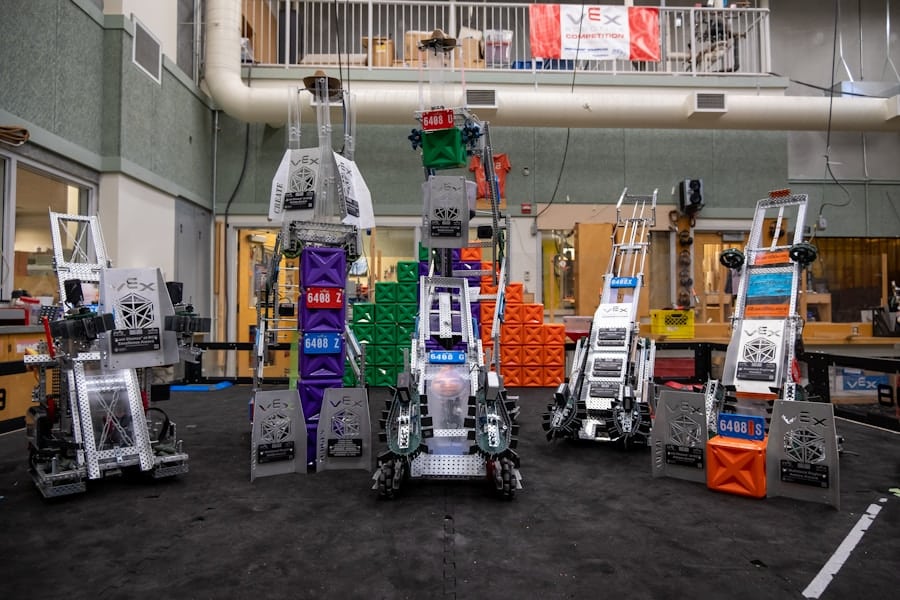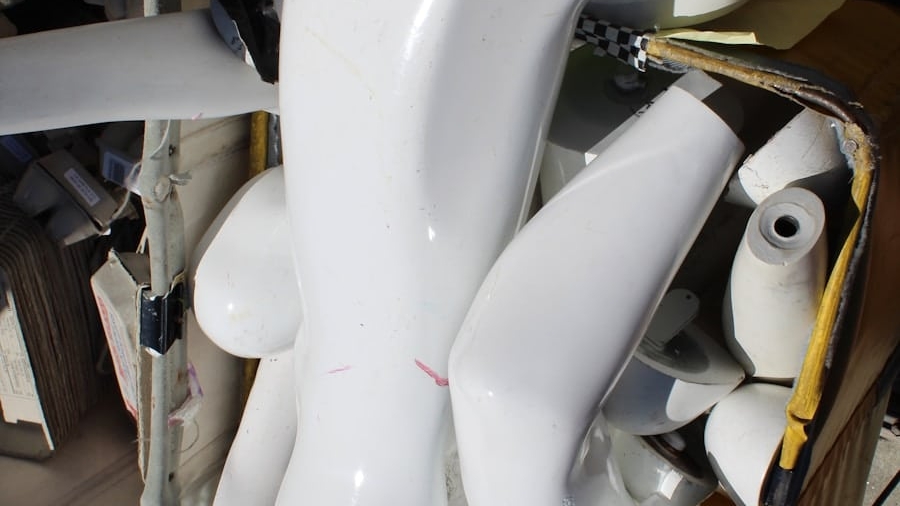The advent of multi-purpose domestic service robots marks a significant milestone in the evolution of household technology. These robots are designed to perform a variety of tasks that traditionally required human intervention, ranging from cleaning and cooking to providing companionship and assistance to the elderly. The integration of artificial intelligence (AI), machine learning, and advanced robotics has enabled these devices to adapt to different environments and user preferences, making them increasingly valuable in modern homes.
As society becomes more reliant on technology, the role of these robots is expected to expand, transforming the way we manage our daily lives. The concept of domestic robots is not entirely new; however, the sophistication and versatility of contemporary models have reached unprecedented levels. Early iterations were often limited to single functions, such as vacuuming or lawn mowing.
In contrast, today’s multi-purpose robots can seamlessly transition between various tasks, offering a more holistic approach to home management. This evolution reflects broader trends in automation and smart home technology, where interconnected devices work in harmony to enhance convenience and efficiency. As we delve deeper into the current state of these robots, it becomes evident that they are not merely gadgets but integral components of a future where homes are increasingly automated.
Key Takeaways
- Multi-purpose domestic service robots are designed to perform a variety of tasks in the home, such as cleaning, cooking, and companionship.
- Current state of multi-purpose domestic service robots includes limited functionality and high cost, making them inaccessible to many consumers.
- Advancements in technology for multi-purpose domestic service robots include improved AI, machine learning, and sensor technology, allowing for more autonomous and efficient operation.
- Potential uses for multi-purpose domestic service robots in the future include assisting the elderly and disabled, providing childcare support, and enhancing home security.
- Challenges and ethical considerations for multi-purpose domestic service robots include privacy concerns, job displacement, and the potential for misuse or abuse of the technology.
Current State of Multi-Purpose Domestic Service Robots
As of 2023, the market for multi-purpose domestic service robots is burgeoning, with numerous companies vying for consumer attention. Major players like iRobot, Samsung, and Ecovacs have developed advanced models that incorporate features such as obstacle detection, voice control, and even AI-driven learning capabilities. For instance, the Roomba series has evolved from a simple vacuuming robot to a sophisticated device that can map out an entire home, remember cleaning schedules, and even suggest optimal cleaning paths based on user habits.
This level of intelligence allows for a more personalized cleaning experience, catering to the unique needs of each household. In addition to vacuuming, many modern robots are equipped with functionalities that extend beyond cleaning. Some models can mop floors, while others are designed to assist with cooking by providing recipes and managing cooking times.
The integration of smart home technology has further enhanced their capabilities; for example, robots can now communicate with other smart devices in the home, such as thermostats and security systems. This interconnectedness not only streamlines household management but also provides users with a comprehensive view of their home environment through mobile applications. The current landscape is characterized by rapid innovation and increasing consumer acceptance, setting the stage for even more advanced developments in the near future.
Advancements in Technology for Multi-Purpose Domestic Service Robots

The technological advancements driving the evolution of multi-purpose domestic service robots are multifaceted and encompass various fields such as artificial intelligence, sensor technology, and robotics engineering. One of the most significant breakthroughs has been in AI algorithms that enable robots to learn from their environments and improve their performance over time. Machine learning techniques allow these devices to analyze data from their interactions with users and their surroundings, leading to enhanced efficiency and adaptability.
For instance, a robot may learn the layout of a home after several cleaning sessions, optimizing its routes to minimize time spent on tasks. Sensor technology has also seen remarkable progress, with modern robots equipped with an array of sensors that enhance their navigational capabilities. Lidar sensors, for example, provide precise mapping of spaces by using laser beams to measure distances and create detailed 3D maps of the environment.
This technology allows robots to navigate complex spaces without colliding with furniture or other obstacles. Additionally, advancements in computer vision enable robots to recognize objects and differentiate between various surfaces, allowing them to adjust their cleaning methods accordingly. These technological innovations not only improve the functionality of domestic robots but also contribute to user safety and satisfaction.
Potential Uses for Multi-Purpose Domestic Service Robots in the Future
Looking ahead, the potential uses for multi-purpose domestic service robots are vast and varied. One promising area is elder care, where robots could play a crucial role in assisting seniors with daily activities. For instance, robots equipped with health monitoring systems could remind elderly users to take medications or alert caregivers in case of emergencies.
Furthermore, social interaction features could help combat loneliness among seniors by providing companionship through conversation or entertainment options like games and music. Another exciting avenue is the integration of multi-purpose robots into smart home ecosystems. As homes become increasingly connected through the Internet of Things (IoT), these robots could serve as central hubs for managing various devices.
Imagine a robot that not only cleans but also adjusts lighting based on user preferences or manages energy consumption by communicating with smart thermostats. The potential for energy efficiency and enhanced convenience is immense, paving the way for homes that are not only smarter but also more sustainable.
Challenges and Ethical Considerations for Multi-Purpose Domestic Service Robots
Despite the promising future of multi-purpose domestic service robots, several challenges and ethical considerations must be addressed. One significant concern revolves around privacy and data security. As these robots collect data about users’ habits and preferences to improve their functionality, there is an inherent risk associated with data breaches or misuse of personal information.
Manufacturers must prioritize robust security measures to protect user data while ensuring transparency about how this information is collected and utilized. Another ethical consideration pertains to the potential impact on employment. As robots take on more household tasks, there is a fear that this could lead to job displacement for individuals working in cleaning services or caregiving roles.
While automation can enhance efficiency and reduce costs for consumers, it is essential to consider how society will adapt to these changes in the labor market. Policymakers will need to explore strategies for reskilling workers and creating new job opportunities in sectors that complement robotic technologies.
Impact of Multi-Purpose Domestic Service Robots on Society

The introduction of multi-purpose domestic service robots has far-reaching implications for society as a whole. One notable impact is the shift in household dynamics; as these robots take over mundane tasks, families may find themselves with more time to engage in meaningful activities together. This change could foster stronger relationships among family members as they spend less time on chores and more time enjoying each other’s company.
Moreover, the widespread adoption of these robots could lead to changes in consumer behavior and expectations regarding home management. As people become accustomed to having robotic assistance in their daily lives, there may be an increased demand for even more advanced features and capabilities. This shift could drive further innovation within the industry as companies strive to meet evolving consumer needs.
Additionally, as multi-purpose domestic service robots become more commonplace, they may contribute to a cultural shift towards greater acceptance of automation in various aspects of life.
Future Trends and Predictions for Multi-Purpose Domestic Service Robots
As we look toward the future, several trends are likely to shape the development of multi-purpose domestic service robots. One prominent trend is the increasing emphasis on personalization and customization. Future models may incorporate advanced AI that allows them to learn individual user preferences more effectively, tailoring their functions to meet specific needs.
For example, a robot could adapt its cleaning schedule based on when family members are typically home or adjust its cooking suggestions based on dietary restrictions. Another trend is the growing focus on sustainability within robotic design and functionality. As environmental concerns continue to rise, manufacturers may prioritize energy-efficient designs and eco-friendly materials in their products.
Future robots might also incorporate features that promote sustainable living practices, such as optimizing energy consumption or providing insights into waste reduction strategies. This alignment with sustainability goals could enhance the appeal of multi-purpose domestic service robots among environmentally conscious consumers.
The Role of Multi-Purpose Domestic Service Robots in the Future Home
In summary, multi-purpose domestic service robots are poised to play an increasingly vital role in shaping the future of home life. Their ability to perform a wide range of tasks efficiently positions them as valuable assets in modern households. As technology continues to advance, these robots will likely become even more capable and integrated into our daily routines.
However, it is essential to navigate the challenges and ethical considerations associated with their adoption thoughtfully. The future home will likely be characterized by a harmonious coexistence between humans and intelligent machines, where multi-purpose domestic service robots enhance our quality of life while allowing us to focus on what truly matters—our relationships and personal well-being. As we embrace this new era of automation, it is crucial to ensure that these innovations serve humanity’s best interests while fostering a society that values both technological progress and ethical responsibility.
In a related article, How Smartwatches Are Revolutionizing the Workplace, the impact of wearable technology on productivity and efficiency in various industries is explored. Just as multi-purpose domestic service robots are changing the way we approach household tasks, smartwatches are transforming the workplace by providing employees with real-time data and communication tools right on their wrists.
FAQs
What are multi-purpose domestic service robots?
Multi-purpose domestic service robots are robots designed to perform a variety of tasks within the home, such as cleaning, cooking, and providing companionship.
What are some potential uses for multi-purpose domestic service robots?
These robots could be used to assist with household chores, provide care for the elderly or disabled, and even entertain and educate children.
What are the current limitations of multi-purpose domestic service robots?
Current limitations include cost, technological capabilities, and concerns about privacy and security.
What are some potential future advancements in multi-purpose domestic service robots?
Future advancements could include improved artificial intelligence, enhanced mobility and dexterity, and increased integration with smart home systems.
What are the potential benefits of multi-purpose domestic service robots?
Potential benefits include increased convenience, improved quality of life for the elderly and disabled, and the ability to free up time for other activities.

